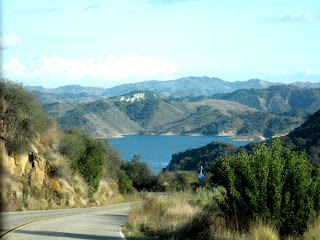
BEVERLY HILLS, Calif. -- Even though the owners of Nipper's offer only champagne, caviar, foie gras, Brie and chocolate cake, business at their singularly tony establishment--neither a restaurant nor a bar nor a disco--is bubbling along nicely.
In fact, the partners in the unique concept say they will open units in Chicago, New York, Dallas, Houston and other cities.
How can a steady volume be generated by such a limited menu? The proprietors of Nipper's say that the allure of champagne is at least a partial explanation.
Some 89 varieties of French champagne--in a volume representing over 5% of the nation's annual consumption of imported bubbly--are poured for patrons of this peculiar hybrid, a champagne-themed nightclub-restaurant-disco.
Among Nipper's clientele is one regular who drops $1,000 nearly every day to entertain a few friends with champagne and the few available comestible "indulgences." Other well-heeled customers flock to Nipper's for private parties, one such group of 100 recently picking up a $35,000 tab. Nipper's normal capacity of about 150 can swell to more than 1,000 guests on occasion, when parties spill over to adjacent outdoor terraces.
Without the expenses of a traditional kitchen, and with labor costs of only 12% and food costs of less than 30% of sales, this offbeat entry into the luxury market is garnering the kind of profit margin that has inspired expansionism.
The two European-raised entrepreneurs responsible for Nipper's, Horatio Lonsdale-Hands and Arthur von Wiesenberger, intend to open 10 more Nipper's ("A dancing & drinking club open to gentlemen & ladies only") in American and Canadian cities from coast to coast over the next two years.
The cork-popping duo, who met when they were in their teens on the ski slopes of Switzerland, first turned their mutual affinity for champagne and caviar into a business reality little more than two years ago in Montecito, Calif., and affluent suburb of Santa Barbara.
The success of their initial Nipper's engendered the larger Beverly Hills unit, which opened last May on pricey Rodeo Drive in the exclusive Rodeo Collection mall. Annualized first-year sales volume, which reportedly will approach $2 million in the 2,200-sq.-ft., two-level Beverly Hills Nipper's, has given Lonsdale-Hands and von Wiesenberger reason to expect a $1.5 million per-unit minimum annual sales potential in each of their planned champagne-and-caviar emporiums.
Those units would open in Chicago, New York City, Dallas, Houston, Montreal, Toronto, Palm Beach, Boston, Denver and San Francisco.
The Patron who spends $1,000 a day at Nipper's may not be typical. Still, Nipper's appears to have found a niche in attracting "not the bulk crowd, but the quality crowd," according to Lonsdale-Hands.
Fern-bar fatigue and singles-bar saturation may have helped create the upscale consumer market being tapped by Nipper's and a host of other champagne-specialty concepts in cities across the country.
Meanwhile the owners of Nipper's are diligently capitalizing on the resurgence of interest in their prestigious, effervescent libation.
Lonsdale-Hands, who gravitated into investment banking from an earlier career in hospitality with Hilton, Intercontinental and Trust-house Forte hotels, now spends most of his waking hours at Nipper's as a proponent of Champagne and an upholder of "the good life."
Partner von Wiesenberger, a travel documentary filmmaker and author of books about bottled waters, exotic foods and champagne, is also thoroughly involved in promoting Nipper's sophisticated market niche. He helped modify the Nipper's concept from its origins as a champagne-and-wine tasting bar that also served various hors, d'oeuvres, had backgammon boards for entertainment and featured a retail wine shop section.
Initial success for the partners came in the wake of considerable conceptual finetuning. "We were not an overnight success in Santa Barbara," Lonsdale-Hands admits. "It took us nine months to make a name for ourselves."
After customer requests, the choice of five champagnes on Nipper's first wine list was expanded into what is now purportedly the largest array of French sparkling wines offered anywhere on earth under one roof.
Hors d'oeuvres were refined and limited to the current rarefield lineup of caviars, pate, fromage and patisserie. Backgammon and retail wine sales, incompatible with the partners' higher-volume business plan, were replaced by a thirst- and appetite-inducing disco dance floor and plusher surroundings.
Three house champagnes are offered by the glass from a selection that changes every six weeks, at prices that might range from $6.50 to $12.50 a glass. Full-bottle prices range from $32 for a current house selection to as high as $3,300 for a 1914 Moet et Chandon Brut Imperial. Six of Moet's Dom Perignon vintages range in price from $120 to $720 (for a magnum of 1971 rose).
Soviet and Iranian Beluga caviar sell for $35 per ounce. Iranian Ossetra Malassol caviar is $25 an ounce. An ounce of Russian Sevruga is $19. A portion of fresh pate de foie de canard is $15; a wedge of imported Brie is $5. Nipper's gateau au chocolat is also $5.
Though not listed on the seven-page menu, a few brands of beer, house wines by the glass and mineral waters are available.
Nipper's opens daily, except Sunday, at 4 p.m. At 10:30 p.m. a disc jockey takes over from taped music and a disco party begins on the upstairs dance floor. A cover charge of $10 on Thursday nights, and $15 on Fridays and Saturdays, ensures a degree of exclusivity and provides a tidy boost to revenue.
At the rate of about 20,000 cases of champagne sold per year in the Montecito and Beverly Hills units, Lonsdale-Hands and von Wiesenberger claim that Nipper's customers drink nearly 4% of the champagne imported from France into the United States annually, and about 5.5% of the French export actually consumed each year by Americans.
"I don't think most people, even those in the industry, are quite aware yet just how much champagne we sell," von Wiesenberger says, estimating that a cork pops for a Nipper's customer every 50 seconds.
Chicago is destined to be the next town where Nipper's pops its cork. An opening there by midyear would be the first of three new units planned for 1985.
COPYRIGHT 1985 Reproduced with permission of the copyright holder. Further reproduction or distribution is prohibited without permission.COPYRIGHT 2008 Gale, Cengage LearningRubell and Shrager started small in the early 70’s, opening a chain of steakhouses in the less fashionable parts of the city. Soon they were both itching for the respectability that a Manhattan address would confer, and Rubell realized that their profits would be bigger if they cut out the food and concentrated on alcohol sales. They bought a building at 254 W. 54th St. that had once been used as a television studio by CBS. An expensive renovation, pushed by Rubell and fretted over by Shrager, included hanging a huge man-in-the-moon over the
dance floor When a large hanging spoon came to rest under its nose, the man-in-the-moon lit up. They christened the club Studio 54, and
the doors opened on April 16, 1977.
From the beginning, Shrager stayed in the background, in his office with the books, while Rubell pampered and partied with superstar guests like Andy Warhol and Liza Minelli. Almost
overnight, Studio 54 became the hottest
disco in New York, and to people in every corner of the globe it symbolized the decadence and hedonism of the Me Decade. Rubell guarded Studio’s door like a hawk, only letting in those he deemed glamorous enough. He also strove to find the perfect combination of black and white, straight and gay—what he called "mixing the salad." He was often rude to people he felt weren’t trying hard enough, saying things like, "Go home and change," or simply, "You’re ugly." But few wanted to argue with success; in its first year, Studio 54 made an estimated $7 million.
December, 1978*
After Rubell publicly bragged one too many times about how much the club was taking in, federal agents armed with guns and a search warrant raided the premises. Schrager is arrested for possession of cocaine.
June, 1979
Rubell & Schrager are charged with tax evasion, obstruction of justice and conspiracy.
December, 1979*
The club and owners are busted by 50 IRS Agents after being tip-offed by a disgruntled former employee and an article in a November 12, 1979 issue of New York Magazine.
*There were two IRS raids of the club. The first in December 1978. The second one (depicted in the movie "54" as 12/31/79) occurred in December, 1979.
January 18, 1980
Despite hiring heavyweight attorney Roy Cohn to defend them, Rubell and Schrager were each sentenced to 3 ½ years in federal prison and fined $20,000 each for tax evasion.
 the stories about Black Friday never cease to amaze me...a crowd of people BUSTED down door at WalMart and trampled an employee to death! So if Wal Mart wants to build in your neighborhood, you need to protest...wear chains and style you hair into a Mohawk and go to City Hall and just say "NO!".....I went up to Ojai for Thanksgiving and had a lovely time...Ojai is the last place where you can see California as it was before subdivisions..the Lake is a powerspot..and now I got a new hobby..driving back on Highway 150 on a cold dark night with the windows down...you hear the coyotes yapping up there...it's cold, lonely, wild and glorious! I need to keep the California University biologists away from this area before they fuck it up by killing everything non native..so DESTROY THIS POST after reading..please...
the stories about Black Friday never cease to amaze me...a crowd of people BUSTED down door at WalMart and trampled an employee to death! So if Wal Mart wants to build in your neighborhood, you need to protest...wear chains and style you hair into a Mohawk and go to City Hall and just say "NO!".....I went up to Ojai for Thanksgiving and had a lovely time...Ojai is the last place where you can see California as it was before subdivisions..the Lake is a powerspot..and now I got a new hobby..driving back on Highway 150 on a cold dark night with the windows down...you hear the coyotes yapping up there...it's cold, lonely, wild and glorious! I need to keep the California University biologists away from this area before they fuck it up by killing everything non native..so DESTROY THIS POST after reading..please... I get a lot of catalogs in the mail but this one takes the cake...JL Powell..they must think I got a rich girlfriend.. hey..Reese Witherspoon lives in Ojai..maybe I could hook up with her..anyway, at JL Powell, you can buy a cashmere mock sweater for $898!..or howz about a cotton trapper vest for $595!..or my favorite..a Coyote Throw for $5998 made from the fur of north American coyotes..I'm gettin' my rifle and goin' back up to Ojai and doing a little trappin' and huntin'..look for a new product line in the future....
I get a lot of catalogs in the mail but this one takes the cake...JL Powell..they must think I got a rich girlfriend.. hey..Reese Witherspoon lives in Ojai..maybe I could hook up with her..anyway, at JL Powell, you can buy a cashmere mock sweater for $898!..or howz about a cotton trapper vest for $595!..or my favorite..a Coyote Throw for $5998 made from the fur of north American coyotes..I'm gettin' my rifle and goin' back up to Ojai and doing a little trappin' and huntin'..look for a new product line in the future....






















































